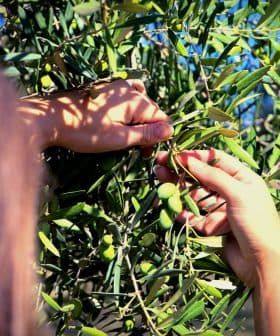Mixed Fortunes for European Olive Oil Sector Amid Covid-19 Pandemic
Olive oil consumption has crept up as a result of the pandemic and prices of extra virgin, virgin and lampante olive oils have started to stabilize. However, both exports and imports are expected to fall.
The European Union’s agricultural sector is proving resilient despite the challenges of the coronavirus pandemic, with no concerns of food shortages reported. Retail sales of olive oil have increased in response to confinement measures, particularly in the main producing countries of the E.U., although production has fallen by 15 percent in the 2019/20 crop year.
As the number of coronavirus cases closes in on one million and the death toll approaches 100,000 in the European Union, the 27-member trading bloc’s agricultural sector is proving resilient.
“With no concerns of food shortage, the E.U. agri-food sector has so far responded remarkably well to challenges of historical magnitude,” the spring 2020 short-term agri-food outlook report said. “There have been, however, specific impacts and certain agricultural sectors have been hit more severely than others.”
Following confinement measures in reaction to Covid-19, retail sales of olive oil increased, in particular in E.U. main producing countries.
Strict confinement measures, which have been put in place across the E.U., have helped drive up demand for olive oil in the main producing countries and have coincided with a slight reversal in the dramatic downward trend of olive oil prices.
“Most notably, the E.U. virgin olive oil price reversed the decline of the last five months, but still remains 40 percent below the last five-year average for the same month,” the report said. “Prices of lampante and extra virgin olive oil saw their decline slow down.”
See Also:Covid-19 UpdatesIn spite of decreasing demand from restaurants and food service companies, which represent about 15 percent of the olive oil purchases, consumption in the E.U. is expected to increase by 5.2 percent in the 2019/20 crop year.
“Following confinement measures in reaction to Covid-19, retail sales of olive oil increased, in particular in E.U. main producing countries,” the report said.
According to the report, the E.U.’s main producing countries are expected to see a consumption increase of 13 percent.
The same low prices that have plagued producers may have enticed consumers to stockpile more olive oil than normal in February and March, ahead of impending lockdown orders across the Mediterranean. Greece, Italy and Spain all reported significant increases in olive oil purchases during that time period.
“At the same time, a massive increase of demand for e‑commerce has been observed, and direct sales by farmers to consumers have reportedly been boosted,” the report said.
However, these same confinement measures are expected to lead to a nine percent consumption decrease across the bloc’s non-producing countries.
“Staple food profited the most from the switch to home consumption… reflecting varying national food cultures,” the report said.
While consumption increases in the E.U., olive oil production fell by 15 percent in the 2019/20 crop year. The drop was mostly fueled by an off-year and lower-than-expected harvest in Spain and came in spite of significant production increases in Italy (+110 percent), Greece (+43 percent) and Portugal (+30 percent).
The combination of an increase in consumption and a decrease in production is also likely to result in a decrease of the trading bloc’s olive oil stocks.
Current stocks in the E.U. are extraordinarily high and have partially contributed to the persistently low prices that have plagued producers across the trading bloc.
These stocks (not including olive oil that is being stored until August as part of the E.U.‘s private storage aid) are expected to decrease by 100,000 tons by the end of the current crop year.
Complications from the coronavirus epidemic are also expected to dampen olive oil exports and imports in the 2019/20 crop year, with decreases of 8.3 and 4.8 percent, respectively.
“Until February 2020, E.U. exports continued to grow in volume (an increase of nine percent year-on-year), while falling in value by eight percent,” the report said. “U.S. tariffs, transport issues linked to Covid-19, and overall economic conditions are expected to weaken global demand for E.U. olive oil, resulting in lower exports in 2019/20.”









